I have the weirdest bug ever.
I have this puzzle game that moves puzzle pieces (which really are buttons with images attached to them). Everything worked fine until I tried to change the text of some label (to indicate how many steps the player has done).
Everytime I call someControl.setText("text");, the puzzle pieces that moved are set back to the their first position. I have no idea why, but they just do.
It consists of two panels, each uses a GridBagLayout. The main frame uses a gridBagLayout as well, which consists of the two panels.
I know it's weird as hell, but I can't figure out what may cause this GUI bug. Any idea?
The pieces of code:
increaseSteps which is called everytime I click a puzzle button
void increaseSteps() {
_steps++;
_lblSteps.setText("Steps: " + _steps);
}
Creation of the puzzle panel (the left panel)
private JPanel puzzlePanel() {
JPanel panel = new JPanel(new GridBagLayout());
GridBagConstraints gbc = new GridBagConstraints();
for (int i = 0; i < _splitImage.getSize(); i++)
for (int j = 0; j < _splitImage.getSize(); j++) {
int valueAtPos = _board.getMatrix()[i][j];
if (valueAtPos == 0)
continue;
int imageRow = _board.getImageRowFromValue(valueAtPos);
int imageCol = _board.getImageColFromValue(valueAtPos);
ImageIcon imageIcon = new ImageIcon(_splitImage.getImages()[imageRow][imageCol]);
JButton btn = new JButton(imageIcon);
_tileButtons[i][j] = new TileButton(btn, i, j);
btn.setPreferredSize(new Dimension(_splitImage.getImages()[i][j].getWidth(null),
_splitImage.getImages()[i][j].getHeight(null)));
// add action listener
btn.addActionListener(this);
btn.addKeyListener(this);
gbc.gridx = j;
gbc.gridy = i;
panel.add(_tileButtons[i][j].getButton(), gbc);
}
return panel;
}
actionPerformed:
@Override public void actionPerformed(ActionEvent e) { if (!(e.getSource() instanceof JButton)) return;
JButton btn = (JButton) e.getSource();
TileButton tile = getTileButtonFromBtn(btn);
if (tile == null)
return;
// check if we can move the tile
String moveDir = _board.canMoveTile(tile.getRow(), tile.getCol());
if (moveDir.equals("no"))
return;
increaseSteps();
int dirx = 0;
int diry = 0;
if (moveDir.equals("left")) {
dirx = -1;
_board.move("left", true);
tile.setCol(tile.getCol() - 1);
} else if (moveDir.equals("right")) {
dirx = 1;
_board.move("right", true);
tile.setCol(tile.getCol() + 1);
} else if (moveDir.equals("up")) {
diry = -1;
_board.move("up", true);
tile.setRow(tile.getRow() - 1);
} else { // down
diry = 1;
_board.move("down", true);
tile.setRow(tile.getRow() + 1);
}
moveButton(btn, dirx, diry, MOVE_SPEED);
if (_board.hasWon())
win();
}
moveButton: (moves the button in a seperate thread, calling btn.setLocation())
private void moveButton(JButton btn, int dirx, int diry, int speed) {
Point loc = btn.getLocation();
// get start ticks, calculate distance etc...
StopWatch stopper = new StopWatch();
int distance;
if (dirx != 0)
distance = _splitImage.getImages()[0][0].getWidth(null) * dirx;
else
distance = _splitImage.getImages()[0][0].getHeight(null) * diry;
if (speed > 0) {
// run the animation in a new thread
Thread thread = new Thread() {
public void run() {
int currentTicks;
int elapsed;
do {
int newX = loc.x;
int newY = loc.y;
elapsed = stopper.getElapsed();
int moved = (int) ((double) distance * (double) (elapsed / (double) speed));
if (dirx != 0)
newX += moved;
else
newY += moved;
btn.setLocation(newX, newY);
} while (elapsed <= MOVE_SPEED);
// make sure the last location is exact
btn.setLocation(loc.x + (dirx == 0 ? 0 : distance), loc.y + (diry == 0 ? 0 : distance));
}
};
thread.start();
}
else
btn.setLocation(loc.x + (dirx == 0 ? 0 : distance), loc.y + (diry == 0 ? 0 : distance));
}

